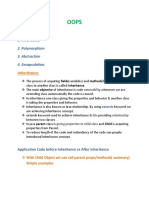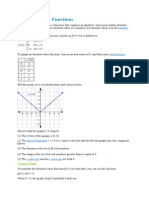0% found this document useful (0 votes)
7 views24 pagesCrack Technical Interview
The document provides an overview of Object Oriented Programming concepts including Abstraction, Polymorphism, Encapsulation, Inheritance, and key Java features such as classes, objects, access modifiers, constructors, method overloading, and interfaces. It also discusses multithreading in Java, the Java Collections Framework, and specific data structures like ArrayList and LinkedList. Each concept is explained with definitions, examples, and relevant code snippets to illustrate their usage in Java programming.
Uploaded by
yagarwal943Copyright
© © All Rights Reserved
We take content rights seriously. If you suspect this is your content, claim it here.
Available Formats
Download as PDF, TXT or read online on Scribd
0% found this document useful (0 votes)
7 views24 pagesCrack Technical Interview
The document provides an overview of Object Oriented Programming concepts including Abstraction, Polymorphism, Encapsulation, Inheritance, and key Java features such as classes, objects, access modifiers, constructors, method overloading, and interfaces. It also discusses multithreading in Java, the Java Collections Framework, and specific data structures like ArrayList and LinkedList. Each concept is explained with definitions, examples, and relevant code snippets to illustrate their usage in Java programming.
Uploaded by
yagarwal943Copyright
© © All Rights Reserved
We take content rights seriously. If you suspect this is your content, claim it here.
Available Formats
Download as PDF, TXT or read online on Scribd
/ 24
























































































